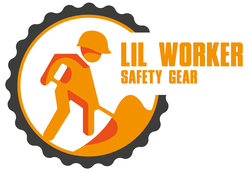There’s a reason that’s a metaphor
Ahhh, late fall. Okay, I admit autumn can be decent – I mean, Halloween, leaf piles, that extra hour of sleep, it’s pretty good stuff. But to me, autumn means one thing – outdoor fire season. All those leaves have to go somewhere after all.
Yes, it’s another reason for parents to be nervous. Because, after all, kids like to play with fire. And let’s face it, playing with fire is like…like…well, playing with fire. (Feel free to quote me on that.)
But rather than listing all the reasons that fire should be avoided, I’m going to take a new approach and come up with a plan. Let’s call it a little risk management.
I’m not saying fire should totally be avoided, though that’s a pretty decent plan. However, I know that fire holds an allure over many, so it’s probably a good idea to come up with ways to mitigate the damage that can happen when flames are in play.
How to be safe around fire with kids – start by being prepared
Of course, as a cautious parent, I’m sure you’re always prepared. Cell phone at the ready to call 911, kids outfitted in helmets and knee pads, all set for outdoor play. First aid kit close by stocked with extra band-aids. You know, the usual.
But there are a few other things you need to do when getting set to start an outdoor fire.
Kids aside, there are basic things that should be done when any fire is started. Ensure you can actually have a fire, i.e., get a permit or check local regulations. Then pick a nice safe spot one away from trees and overhanging branches, buildings, dry bushes, etc. Create a nice little pit that is surrounded by bricks or stones and clear of tripping hazards. Assemble the necessary tinder, kindling and appropriately sized pieces of wood so that you don’t have to leave things unattended at any point while looking for more newspaper in the downstairs recycling bin all while Junior tries to keep the dog away from the nice chewing sticks.
Create a teepee or log-house style shape and light the tinder with a barbecue lighter and no accelerant. Yes, a little gas makes things move along more quickly but keeping your eyebrows and nose hair is important.
When burning, use dry, hard woods if possible, as they throw off fewer sparks. And green or damp wood creates more smoke – not the best for anyone’s lungs. Add wood slowly once the fire is established. Pay attention to where the wind is blowing and establish seating away from that area.
Keeping the kids safe
If you’ve managed to get things going without incident, take time, if you haven’t already, to let the kids know how close they can get. Establish a safe distance. If marshmallows are part of the plan, ensure roasting implements are long and no loose clothing is being worn. Always have an adult on hand for supervision. And make certain everyone knows the “stop-drop-and-roll” routine.
Putting out the fire
It’s just as important to prepare for extinguishing things, so always have a water hose or buckets nearby. Let the wood burn down to ash if possible. Keep pouring water on until the hissing sounds stop. Stir the ashes and ground with a shovel to ensure everything is wet and all is cool. Like Smokey the Bear says, “If it’s too hot to touch, it’s too hot to leave.”
I can’t deny, sitting around a fire telling stories, eating snacks and maybe even singing a song or two can be a good time. So, keep it that way by being prepared and attentive, especially when there are kids involved.

